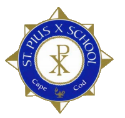The Triduum
The Triduum (Holy Week)
by Rick Swenton, Cantor, St. Pius the Tenth Church
The Easter Triduum is the culmination of the entire liturgical year. Our forty days of prayer, fasting and almsgiving during Lent have led us to this ultimate celebration. Triduum in Latin means “Three Days.” Those three days are often thought of as Holy Thursday, Good Friday and the Easter Vigil. These are the most sacred days in the church year. The days of the Triduum are actually calculated according to the ancient Jewish method of starting days at sundown. The Triduum begins with the Mass of the Lord’s Supper which is celebrated after sundown on Holy Thursday. This means that the Triduum technically begins on Good Friday eve and ends at sundown on Easter Sunday. It is only appropriate that Easter, the greatest feast of the Church is celebrated on the Lord’s Day.
The Triduum is not an historical review or reenactment of Christ’s passion, death and resurrection. It is really a celebration of the here and now. It is a kind of remembering, called anamnesis, which makes the past alive and real in our present day. Just as Jesus conquered death then, he continues to have power over death now and remains our source of eternal life.
Holy Thursday
The Mass of the Lord’s Supper is a remembering of the original Last Supper. It is a celebration of the Eucharist for our community that continues in this day and time. At this Mass, we are told of the Mandatum, the great command. “Such as my love has been for you, so must your love be for each other. This is how all will know you for my disciples: by your love for one another.” (John 13, 34-35) The Washing of the Feet is a statement Jesus made about service and humility. The action of washing of feet actually speaks about the death of Jesus – one who serves others, even if they don’t deserve it. Jesus commands us to recognize and honor each other as sisters and brothers, the children of God.
Good Friday
The remembering of Christ’s passion and death on Good Friday is a time where we acknowledge the great sacrifice Jesus made for us so that we may have eternal life. Good Friday does not mark a time where Jesus dies and leaves us. Commemorating His passion and death is not the same as His actual suffering and dying. Jesus is fully present to us on Good Friday just as on every other day of the year.
Good Friday is a time to reflect upon how we can follow Jesus’ example. During the veneration of the cross, nothing is quite as powerful as paying reverence to an instrument of torture with a gentle touch. As we venerate the cross, we turn to God in prayer, offering up every need this world has, knowing that God will stand beside us and guide us.
Easter Vigil
During the Easter Vigil celebration, we break open the Paschal Mystery in symbol, story and song. We experience the Service of Fire where this symbol reminds us that the risen Jesus is our light and strength. We hear the sacred Easter Proclamation, called The Exsultet. We look back to the very dawn of creation. We see God’s presence and salvation revealed in the Holy Scriptures through word and song. We baptize and confirm catechumens and renew our own baptism on this night. The symbols of fire and water speak to our senses without using words.
Easter Sunday
The celebration of the resurrection continues through Easter Sunday. Together we go to the table and celebrate the Easter Eucharist. The stone has been rolled away and we stand before the empty tomb. “The Lord has been raised! It is true.” “This is the day the Lord has made; let us rejoice and be glad.” We discover the Lord in his word. We recognize Jesus in the breaking of the bread now and forever.

